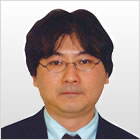Hidenori Noguchi

- Affiliation:
- Nano Interface Unit, Nanointerface Group
- Specialty:
- Surface (photo)electrochemistry, Nonlinear spectroscopy, Ultrafast spectroscopy
- Academic degree:
- Ph.D., Hokkaido University (1999)
- Recent publications
- See NIMS Researchers DB
Educational and Working History
| 2009 Nov | - | Present | MANA Scientist, MANA, NIMS |
| 2009 Nov | - | Present | Visiting Associate Professor, Graduate School of Science, Chemistry, Hokkaido University |
| 2007 Apr | - | 2009 Nov | Assistant Professor, Graduate School of Science, Chemistry, Hokkaido University |
| 2004 May | - | 2007 Mar | Research Associate, Graduate School of Science, Division of Chemistry, Hokkaido University |
| 2004 Apr | Research Assistant, Chemical Resources Laboratory, Tokyo Institute of Technology | ||
| 2003 Jan | - | 2004 Mar | JST Researcher (PD) Nara Institute of Science and Technology (NAIST) |
| 2001 Apr | - | 2001 Oct | Postdoctral Researcher, Forschungszentrum Julich, Institute of thin films and interface (ISG3), Germany |
| 2000 Jan | - | 2002 Dec | JSPS Research Fellow (PD), Chemical Research Laboratory, Tokyo Institute of Technology |
| 1999 Dec | Ph.D., Chemistry, Graduate School of Science, Hokkaido University | ||
| 1998 Apr | - | 1999 Dec | JSPS Research Fellow (DC2) |
| 1996 Mar | M.D. Division of Chemistry, Graduate School of Science, Hokkaido University | ||
| 1994 Mar | B.D. Department of Chemistry, Faculty of Science, Hokkaido University |
Research Interests
Structure of interfacial water investigated by sum frequency generation (SFG) spectroscopy
Water is not just a solvent but also a reactant or product in many important electrocatalytic reactions. Thus, molecular-level understanding of the structure arrangement of water molecules at an electrode/electrolyte solution interfaces is one of the important issues in electrochemistry. We applied sum frequency generation (SFG) spectroscopy, which is an interface-selective probe, to compare the potential dependent interfacial water structure at Pt and Au thin film electrodes. We found that the structure of interfacial water is more highly oriented at the Pt electrode than at the Au electrode.
Surface reaction dynamics at solid/liquid interfaces investigated by time resolved SFG spectroscopy
The determination of time dependent structure of short-lived intermediates on surface is important in understanding surface chemical reactions. The observation of the species is, however, difficult by means of conventional surface vibrational techniques. Time-resolved vibrational spectroscopy using sum-frequency generation (TR-SFG) process is one of the powerful tools to investigate the ultrafast surface reaction dynamics. Transient site hopping behavior of CO adsorbed on Pt surface under electrochemical conditions was observed using TR-SFG initiated by picosecond laser pulse excitation.
Selected Papers
-
- Molecular structures at electrode/electrolyte solution interfaces related to electrocatalysis
- Noguchi H, Okada T, Uosaki K
- Faraday Discuss, 2008; 140(1): 125-137.
- Interfacial water structure at polymer gel/quartz interfaces investigated by sum frequency generation spectroscopy
- Noguchi H, Minowa H, Tominaga T, Gong JP, Osada Y, Uosaki K
- Phys Chem Chem Phys, 2008; 10(32): 4987-4993.
- SFG study on potential dependent structure of water at Pt electrode/electrolyte solution interface
- Noguchi H, Okada T, Uosaki K
- Electrochim Acta, 2008; 53(23): 6841-6844.
- Metal cation-induced formation of DNA self-assembled monolayers on silicon: Vibrational sum frequency generation spectroscopy
- Asanuma H, Noguchi H, Uosaki K, Yu HZ
- J Am Chem Soc, 2008; 130(25): 8016-8022.
- Photoinduced surface dynamics of CO adsorbed on a platinum electrode
- Noguchi H, Okada T, Uosaki K
- J Phys Chem B, 2006; 110(31): 15055-15058.
- Structure and reactivity of alkoxycarbonyl (ester)-terminated monolayers on silicon: Sum frequency generation spectroscopy
- Asanuma H, Noguchi H, Uosaki K, Yu HZ
- J Phys Chem B, 2006; 110(10): 4892-4899.


